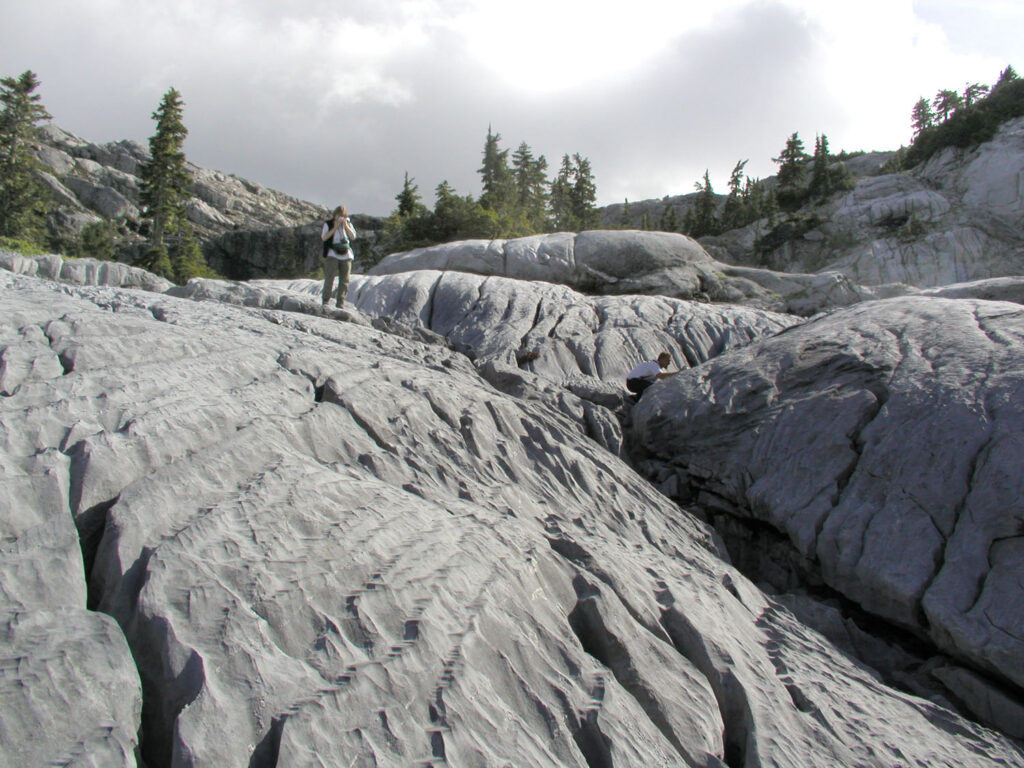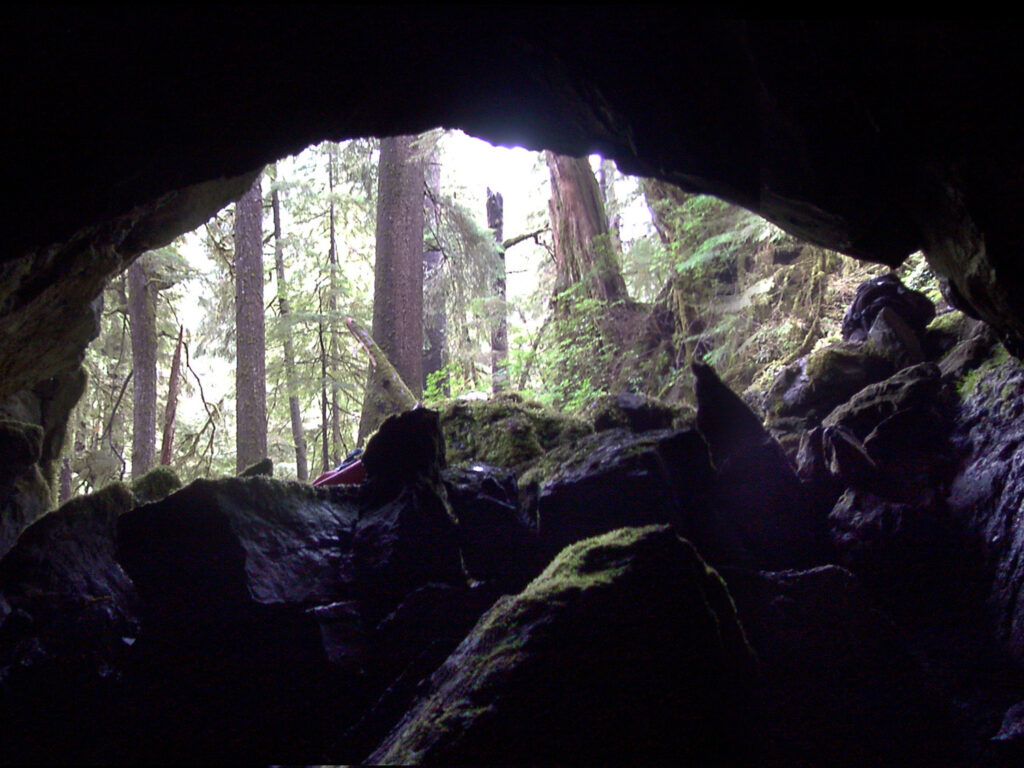12: Karst and Caves
- Page ID
- 25492
\( \newcommand{\vecs}[1]{\overset { \scriptstyle \rightharpoonup} {\mathbf{#1}} } \)
\( \newcommand{\vecd}[1]{\overset{-\!-\!\rightharpoonup}{\vphantom{a}\smash {#1}}} \)
\( \newcommand{\dsum}{\displaystyle\sum\limits} \)
\( \newcommand{\dint}{\displaystyle\int\limits} \)
\( \newcommand{\dlim}{\displaystyle\lim\limits} \)
\( \newcommand{\id}{\mathrm{id}}\) \( \newcommand{\Span}{\mathrm{span}}\)
( \newcommand{\kernel}{\mathrm{null}\,}\) \( \newcommand{\range}{\mathrm{range}\,}\)
\( \newcommand{\RealPart}{\mathrm{Re}}\) \( \newcommand{\ImaginaryPart}{\mathrm{Im}}\)
\( \newcommand{\Argument}{\mathrm{Arg}}\) \( \newcommand{\norm}[1]{\| #1 \|}\)
\( \newcommand{\inner}[2]{\langle #1, #2 \rangle}\)
\( \newcommand{\Span}{\mathrm{span}}\)
\( \newcommand{\id}{\mathrm{id}}\)
\( \newcommand{\Span}{\mathrm{span}}\)
\( \newcommand{\kernel}{\mathrm{null}\,}\)
\( \newcommand{\range}{\mathrm{range}\,}\)
\( \newcommand{\RealPart}{\mathrm{Re}}\)
\( \newcommand{\ImaginaryPart}{\mathrm{Im}}\)
\( \newcommand{\Argument}{\mathrm{Arg}}\)
\( \newcommand{\norm}[1]{\| #1 \|}\)
\( \newcommand{\inner}[2]{\langle #1, #2 \rangle}\)
\( \newcommand{\Span}{\mathrm{span}}\) \( \newcommand{\AA}{\unicode[.8,0]{x212B}}\)
\( \newcommand{\vectorA}[1]{\vec{#1}} % arrow\)
\( \newcommand{\vectorAt}[1]{\vec{\text{#1}}} % arrow\)
\( \newcommand{\vectorB}[1]{\overset { \scriptstyle \rightharpoonup} {\mathbf{#1}} } \)
\( \newcommand{\vectorC}[1]{\textbf{#1}} \)
\( \newcommand{\vectorD}[1]{\overrightarrow{#1}} \)
\( \newcommand{\vectorDt}[1]{\overrightarrow{\text{#1}}} \)
\( \newcommand{\vectE}[1]{\overset{-\!-\!\rightharpoonup}{\vphantom{a}\smash{\mathbf {#1}}}} \)
\( \newcommand{\vecs}[1]{\overset { \scriptstyle \rightharpoonup} {\mathbf{#1}} } \)
\( \newcommand{\vecd}[1]{\overset{-\!-\!\rightharpoonup}{\vphantom{a}\smash {#1}}} \)
\(\newcommand{\avec}{\mathbf a}\) \(\newcommand{\bvec}{\mathbf b}\) \(\newcommand{\cvec}{\mathbf c}\) \(\newcommand{\dvec}{\mathbf d}\) \(\newcommand{\dtil}{\widetilde{\mathbf d}}\) \(\newcommand{\evec}{\mathbf e}\) \(\newcommand{\fvec}{\mathbf f}\) \(\newcommand{\nvec}{\mathbf n}\) \(\newcommand{\pvec}{\mathbf p}\) \(\newcommand{\qvec}{\mathbf q}\) \(\newcommand{\svec}{\mathbf s}\) \(\newcommand{\tvec}{\mathbf t}\) \(\newcommand{\uvec}{\mathbf u}\) \(\newcommand{\vvec}{\mathbf v}\) \(\newcommand{\wvec}{\mathbf w}\) \(\newcommand{\xvec}{\mathbf x}\) \(\newcommand{\yvec}{\mathbf y}\) \(\newcommand{\zvec}{\mathbf z}\) \(\newcommand{\rvec}{\mathbf r}\) \(\newcommand{\mvec}{\mathbf m}\) \(\newcommand{\zerovec}{\mathbf 0}\) \(\newcommand{\onevec}{\mathbf 1}\) \(\newcommand{\real}{\mathbb R}\) \(\newcommand{\twovec}[2]{\left[\begin{array}{r}#1 \\ #2 \end{array}\right]}\) \(\newcommand{\ctwovec}[2]{\left[\begin{array}{c}#1 \\ #2 \end{array}\right]}\) \(\newcommand{\threevec}[3]{\left[\begin{array}{r}#1 \\ #2 \\ #3 \end{array}\right]}\) \(\newcommand{\cthreevec}[3]{\left[\begin{array}{c}#1 \\ #2 \\ #3 \end{array}\right]}\) \(\newcommand{\fourvec}[4]{\left[\begin{array}{r}#1 \\ #2 \\ #3 \\ #4 \end{array}\right]}\) \(\newcommand{\cfourvec}[4]{\left[\begin{array}{c}#1 \\ #2 \\ #3 \\ #4 \end{array}\right]}\) \(\newcommand{\fivevec}[5]{\left[\begin{array}{r}#1 \\ #2 \\ #3 \\ #4 \\ #5 \\ \end{array}\right]}\) \(\newcommand{\cfivevec}[5]{\left[\begin{array}{c}#1 \\ #2 \\ #3 \\ #4 \\ #5 \\ \end{array}\right]}\) \(\newcommand{\mattwo}[4]{\left[\begin{array}{rr}#1 \amp #2 \\ #3 \amp #4 \\ \end{array}\right]}\) \(\newcommand{\laspan}[1]{\text{Span}\{#1\}}\) \(\newcommand{\bcal}{\cal B}\) \(\newcommand{\ccal}{\cal C}\) \(\newcommand{\scal}{\cal S}\) \(\newcommand{\wcal}{\cal W}\) \(\newcommand{\ecal}{\cal E}\) \(\newcommand{\coords}[2]{\left\{#1\right\}_{#2}}\) \(\newcommand{\gray}[1]{\color{gray}{#1}}\) \(\newcommand{\lgray}[1]{\color{lightgray}{#1}}\) \(\newcommand{\rank}{\operatorname{rank}}\) \(\newcommand{\row}{\text{Row}}\) \(\newcommand{\col}{\text{Col}}\) \(\renewcommand{\row}{\text{Row}}\) \(\newcommand{\nul}{\text{Nul}}\) \(\newcommand{\var}{\text{Var}}\) \(\newcommand{\corr}{\text{corr}}\) \(\newcommand{\len}[1]{\left|#1\right|}\) \(\newcommand{\bbar}{\overline{\bvec}}\) \(\newcommand{\bhat}{\widehat{\bvec}}\) \(\newcommand{\bperp}{\bvec^\perp}\) \(\newcommand{\xhat}{\widehat{\xvec}}\) \(\newcommand{\vhat}{\widehat{\vvec}}\) \(\newcommand{\uhat}{\widehat{\uvec}}\) \(\newcommand{\what}{\widehat{\wvec}}\) \(\newcommand{\Sighat}{\widehat{\Sigma}}\) \(\newcommand{\lt}{<}\) \(\newcommand{\gt}{>}\) \(\newcommand{\amp}{&}\) \(\definecolor{fillinmathshade}{gray}{0.9}\)After carefully reading this chapter, and completing the exercises within it and the questions at the end, you should be able to:
- Explain the chemical processes that lead to the formation of karst in limestone,
- Describe some of the features of the different types of limestone karst, including features common in exokarst, epikarst and endokarst and explain how epikarst is important for the introduction of water to the deeper parts of a karst system,
- Explain the importance of the terms “vadose”, “epiphreatic” and “phreatic” in the context of limestone karst systems, and how the formation of limestone karst is related to these zones,
- Describe where and how water is stored in a karst system, and why some karst springs have relatively steady flow, while others are more sporadic (flashy),
- List some of the different types of non-limestone karst,
- Describe some limestone karst speleogens and speleothems and how they form, and discuss the origins of cave sediments, and
- Describe the important of karst to humans and to ecosystems.
- 12.1: Karst Landscapes and Systems
- This page discusses karstification, a chemical process driven by atmospheric carbon dioxide that increases rainwater acidity, leading to the dissolution of limestone and the formation of cracks and caves. Essential elements for karst development include water and carbon dioxide, influenced by bedrock type, soil composition, and elevation. Karst landscapes support unique ecosystems and provide important groundwater resources, with diverse forms notably present in Southeast Asia and North America.
- 12.2: Karst Landscapes, Landforms, and Surface Features
- This page discusses karst landscapes, highlighting their characteristics shaped by bedrock, climate, and other factors, with British Columbia showcasing various types like shoreline and alpine karst. Key features include sinkholes, which form through solution, collapse, and suffosion mechanisms, illustrating unique hydrology in these environments.
- 12.3: 12.03- Karst Hydrogeology
- This page discusses the distinct characteristics of karst landscapes, focusing on groundwater infiltration, aquifer dynamics, and water chemistry influenced by bedrock types. It emphasizes the unique features of karst aquifers, including their rapid response to pollution from various sources, due to conduit flow and minimal surface drainage.
- 12.4: Karst Cave Features, Cave Contents, and Subterranean Life
- This page discusses the formation and characteristics of karst caves, primarily created through solutional processes in limestone. Caves contain passages, chambers, and speleogens, while speleothems like stalactites form through chemical processes influenced by environmental conditions. These formations aid in climate research. Caves support unique life forms with adaptations for nutrient scarcity and include various organisms categorized by their dependence on cave environments.
- 12.5: Origin and Genesis of Caves
- This page discusses the formation of karst caves, highlighting that around 90% originate from meteoric water, with some created through hydrothermal processes. The development occurs as meteoric water infiltrates and forms phreatic loops below the water table, influenced by geological changes. The age of caves can range from thousands to millions of years, complicating age determination. Methods such as cave sediment dating offer insights into the timelines of their formation.
- 12.6: Human Interactions with Karst and Caves
- This page discusses human interaction with karst features, highlighting their historical significance for shelter and worship, while also addressing the threats posed by agriculture and forestry. Conservation efforts are essential to protect cave ecosystems and fragile formations. Sustainable tourism may provide economic benefits and raise awareness.
- 12.7: Chapter 12 Summary and Questions for Review
- This page discusses karst landscapes, highlighting their landforms like sinkholes and springs, as well as cave ecosystems. It explains the formation of caves, particularly the epiphreatic zone's influence and the impact of water table changes. Additionally, it addresses human interactions with these environments, including their archaeological importance and roles in tourism and climate research.
Karst is a landscape or terrain that results from the weathering of bedrock types that are soluble in water. These bedrock types are primarily limestone and marble (Figure \(\PageIndex{1}\)), but can also include dolostone (or dolomite), gypsum, halite, and in rarer cases sandstone and quartzite. A karst landscape is characterized by surface features such as sinkholes, a lack of surface streams and a subsurface network of openings or cavities. Subsurface cavities that can be entered by humans are considered caves—one of the best-known features of a karst landscape.

There are many different definitions for a cave depending on the circumstances and geographical location. However, the simplest and most well accepted is ‘a cave is a natural cavity within the Earth’s crust, which is connected to the surface and has an opening that is penetrable by a human and includes a zone of permanent and total darkness’ (Figure \(\PageIndex{2}\)). This definition covers the three important aspects of a cave, its formation, size, and appearance. Caves typically form only a small portion of the cavities within a karst landscape (e.g., less than 0.01%,[1] ) and as such should not be treated in isolation from other parts of the karst landscape. In many cases a cave is linked by smaller conduits and cavities that lead up to the surface (Figure 12.0.2). A cave can also be connected to other caves and be part of a larger cave system.



